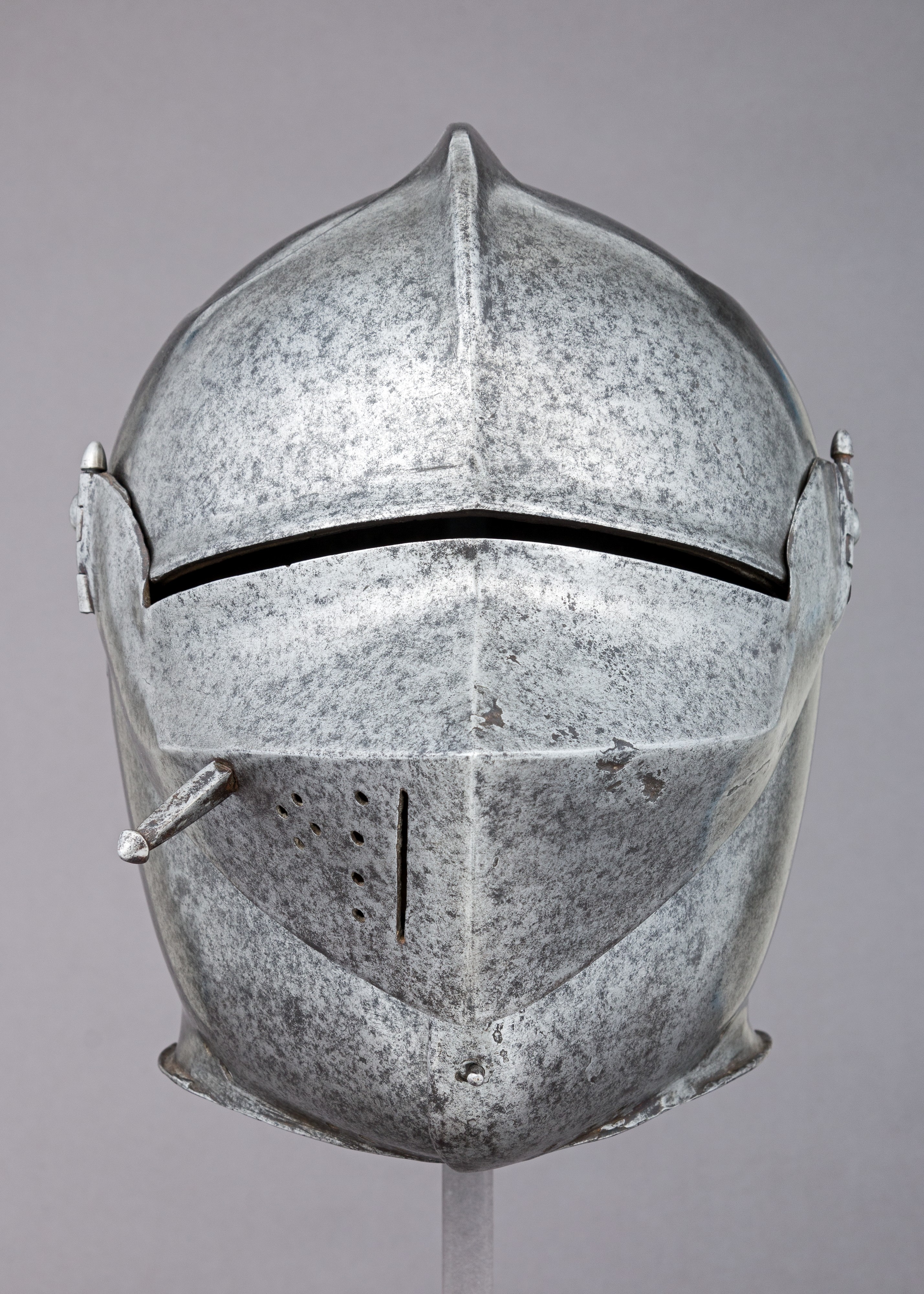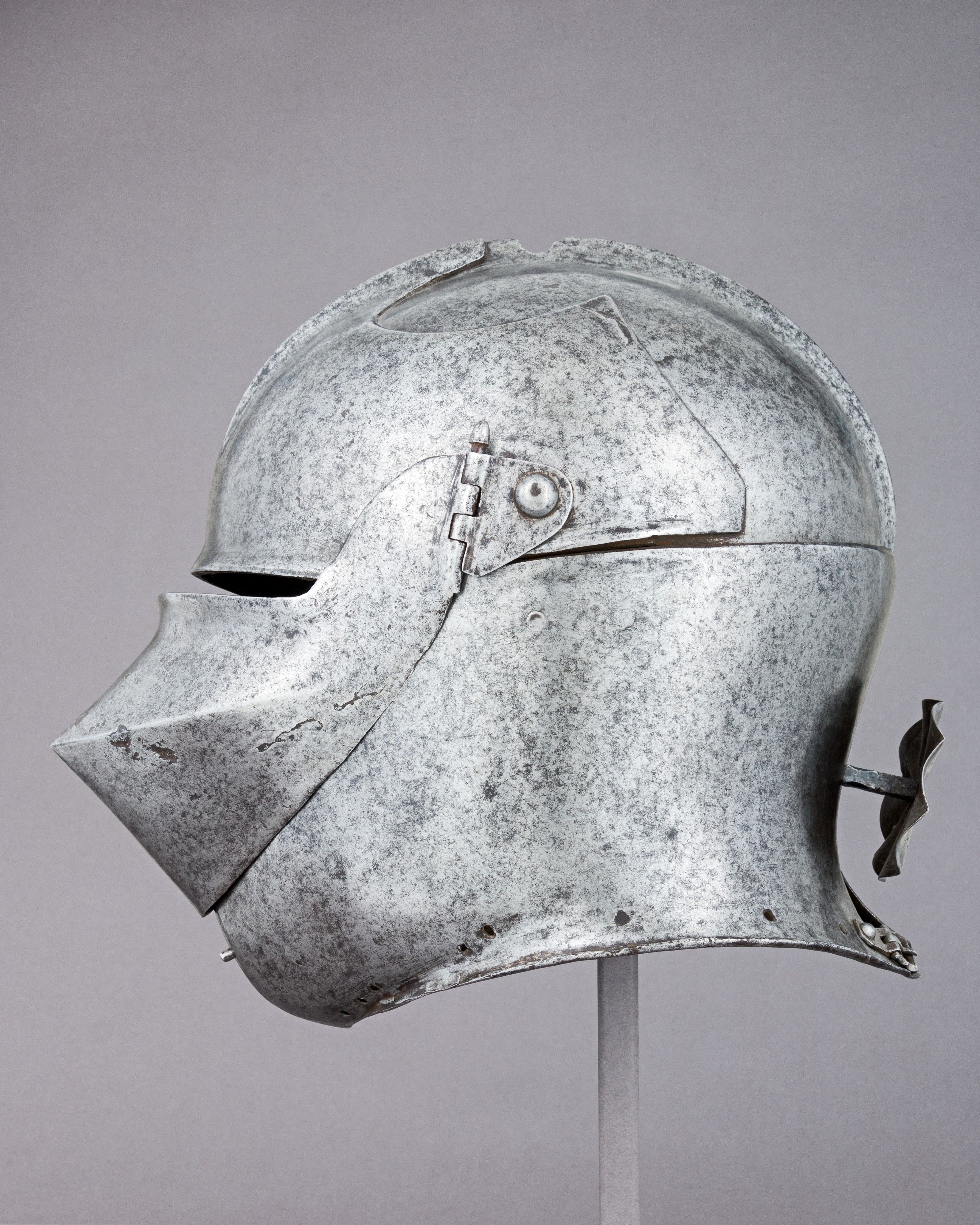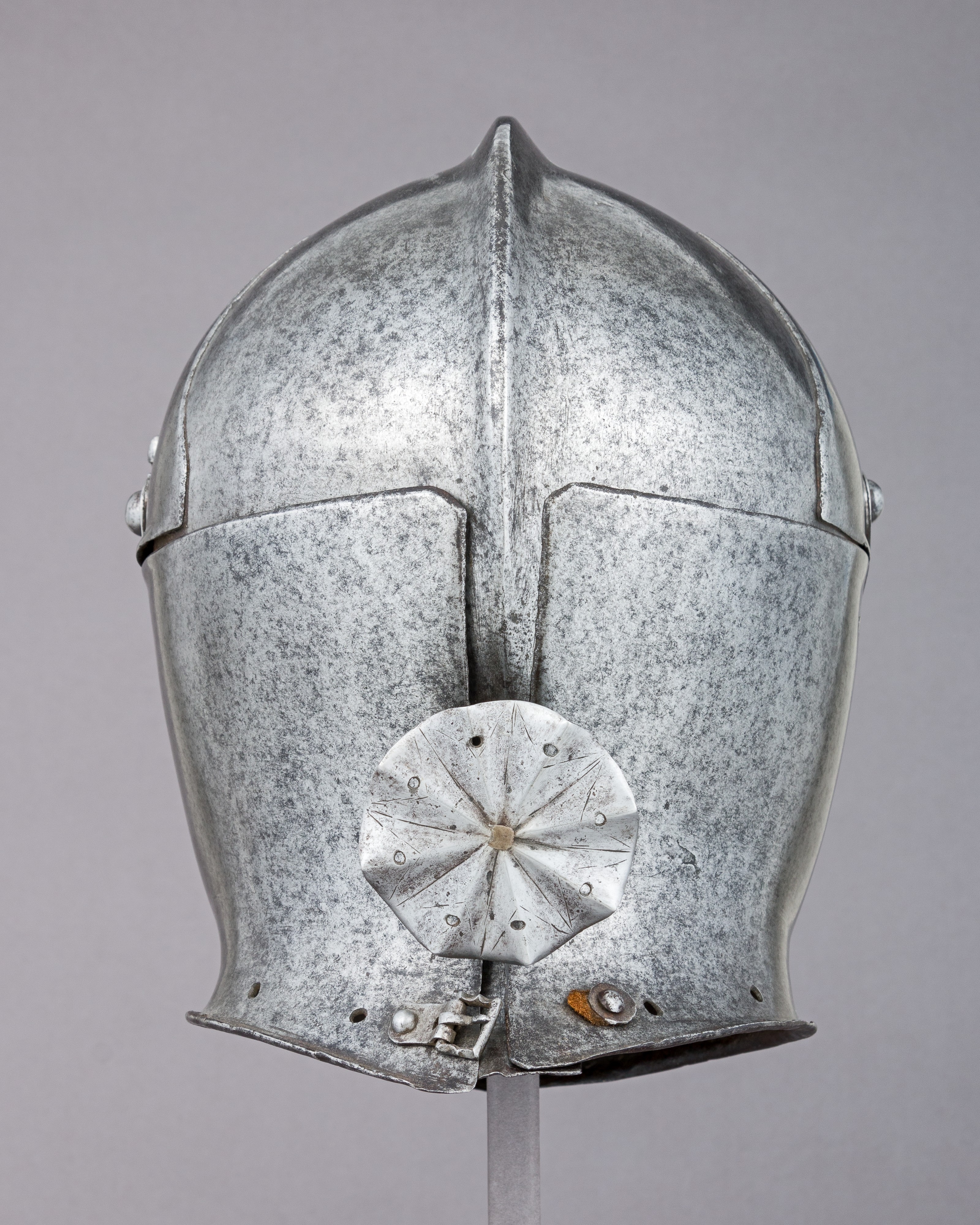Armet
The term armet is generally used to denote a visored helmet of particular construction, one in which large cheekpieces are hinged to the base of the bowl just above the ears and close in front of the chin. The face opening is formed in the space between the rim of the bowl and the edges of the cheekpieces, an area closed and protected by a short, pointed visor hinged to pivots on either side of the bowl. The right side of the visor is pierced with a slot and holes for ventilation, and has a lifting peg. A cusped brow reinforce riveted to the front of the bowl, and a circular plate (rondel) attached by a short stem to the base of the bowl at the rear of the helmet are two other features common to the armet. Apart from the rondel and stem, which are restorations, this armet is entirely homogeneous. Its original appearance would have included a protective curtain-like mail fringe attached by rivets to the lowermost edge of the helmet, and several plates known as a bevor, or wrapper, which fit over the front of the armet to reinforce the lower face and neck regions. The bevor was attached by straps reaching around the armet and buckling at the back, just above the stem of the rondel which held the strap securely in place. The keyhole-shaped slot at the top of the comb originally held the support for a decorative or heraldic crest which once surmounted the helmet.
The armet was the typical head piece of the fully armored equestrian knight throughout most of the fifteenth century, and its smooth, compact, rounded form typifies the streamlined appearance of fifteenth-century Italian armor in general. The armet's close-fitting form necessitated its highly practical and ingenious construction, with cheeckpieces hinged to the bowl that opened to admit the head. The vulnerable areas that resulted where plates overlapped, particularly at the front of the chin and along the edge of the visor (which, incidentally, was not fastened closed to the cheekpieces but was merely held down by its own weight), were protected by the addition of the bevor that fit over the lower front half of the helmet. The bevor also protected the front of the neck, which was otherwise covered by the collar of a mail shirt worn underneath the armor and by the mail fringe suspended from the edge of the armet. The ventilation holes in the visor are only on the right side, so that the more exposed left side, which usually bore the brunt of blows, was not weakened.
Throughout its long use, the armet underwent gradual changes in design, and this particular example can be dated toward the end of this development, about 1490. Features which distinguish this armet as a late example include the pronounced comb; the large cusped brow reinforce which covers more than half the skull, its lower edges turned out to cover the hinges of the cheekpieces and its front edge turned out over the eyes; the shape of the visor; and the large inverted semicircular face opening.
The pierced ventilation openings on the right side of the visor are unusual for Italian armets but are found on armets believed to be of Flemish origin and on a group of armets found in English churches, such as those at Beverley Minster, Yorkshire, at Isleham, Cambridgeshire, and Hawstead, Suffolk. Apart from the visors, these armets are so similar to their Italian counterparts that it is impossible to determine if they were made in Italy for export to the north, or if they were made locally in England or Flanders, closely copied from Italian models.
Due to rights restrictions, this image cannot be enlarged, viewed at full screen, or downloaded.
This artwork is meant to be viewed from right to left. Scroll left to view more.






